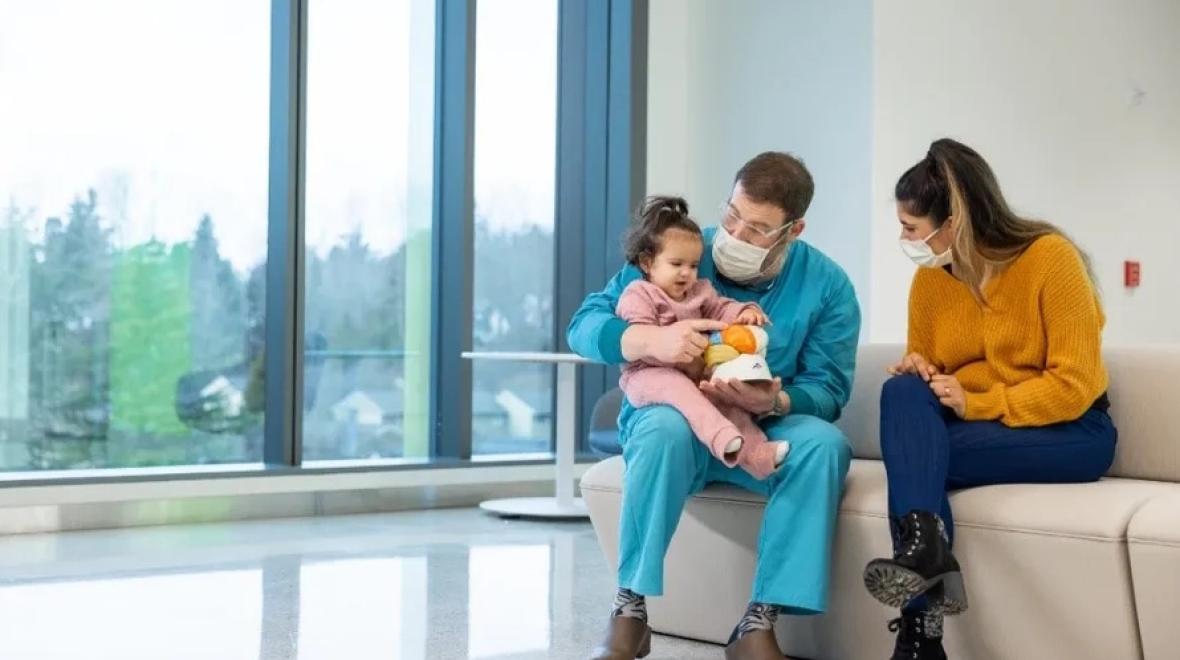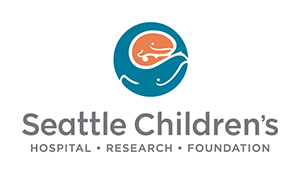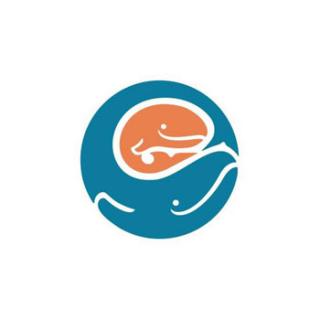
Photo:
Seattle Children's Hospital
This excerpted post was originally published on the Seattle Children’s On the Pulse blog.

When Jiana was born in August 2021, she appeared to be a healthy newborn baby.
“I still remember her pediatrician called her a textbook baby,” recalls Latika, Jiana’s mom.
Unfortunately, that normalcy was short-lived. On her first day home from the hospital, Jiana’s parents noticed that their daughter was twitching.
“We were first-time parents and thought it was colic or gas,” says Kunal, Jiana’s dad. “We didn’t know what to expect.”
Then, when Jiana was 2 weeks old, Kunal and Latika saw her body stiffen for about 30 seconds. They sent a video of the episode to their pediatrician, who told them to go to the Seattle Children’s Emergency Department immediately. The family waited while the care team conducted diagnostic tests to determine what was going on with their newborn baby.
“We thought they would find something small, and we would be home in a couple of hours,” Kunal remembers.
But an electroencephalogram (EEG) showed Jiana’s unusual movements were actually seizures.
Magnetic resonance imaging (MRI) revealed that Jiana had hemimegaloencephaly, a rare neurological condition in which one half of the brain is abnormally larger than the other, causing frequent seizures.
Jiana was having at least 10 seizures each day.
“The biggest thing we worry about for a child like Jiana, who’s having really frequent short seizures, is that it prevents the brain from developing,” explains Annie Weisner, M.D., Ph.D., Jiana’s neurologist. “It prevents the brain from being able to learn and grow.”
The care team gave Jiana two anti-seizure medications, which stopped her visible seizures. Still, another EEG showed the malformed side of her brain was still generating frequent seizures and damaging the healthy side.
“I’ll never forget that day,” says Latika. “I never imagined my first-born child would go through something like this.”
On their daughter's third day in the hospital, Kunal and Latika met with Jason Hauptman, M.D., Ph.D., a pediatric neurosurgeon at Seattle Children’s. Hauptman explained the best option to prevent developmental delays and cure Jiana’s epilepsy was a hemispherectomy surgery, a procedure that disconnects the affected half of the brain’s cortex from the other half.
The sooner they could operate, the better, Hauptman explained. He recommended doing the surgery when Jiana was only 2 months old.
“At first, they were shocked and wrestling with the idea of doing such dramatic surgery on their beautiful little baby,” says Hauptman.
But the family came to recognize each of Jiana’s seizures was damaging her brain and putting her early development at risk. By intervening swiftly, they could avoid the harmful effects of seizure medications and give Jiana a better chance at having a typical childhood.
Additionally, Hauptman explained, patients who have a hemispherectomy at a very young age typically recover better after the surgery.
“Nerve cells at a young age have a remarkable ability to relearn function,” says Hauptman. “The younger you are, the more adept you are at using this neuroplasticity.”
Hauptman’s clarity and confidence helped Jiana’s parents understand and accept the surgical procedure.
“Dr. Hauptman has been our guiding light through this whole journey,” says Latika.
Still, Jiana’s parents did their research — they looked at epilepsy programs at other institutions and consulted with family members who are well-renowned doctors in India. All confirmed they were in the right place and doing the right surgery.
Seattle Children’s is the only level-4 epilepsy center in the region dedicated exclusively to pediatrics. The neurosurgery team has performed more than 3,000 neurosurgeries in the past five years, more than any other children’s hospital in our region.
“We’re one of the few centers in the world that has done this surgery more than a hundred times, and we have all of the key pieces to doing it safely,” says Hauptman. “[We have] incredibly experienced neurologists, advanced diagnostic techniques, a neuropsychology team that sees each of our surgical epilepsy patients and rehabilitation experts to help children regain any lost function during the surgery.”
While Kunal and Latika felt confident that the hemispherectomy was Jiana’s best option, they still felt anxious in the months leading up to her surgery.
“We tried to have faith that we were in the best place for this worst kind of situation,” says Kunal. “We could have been anywhere in the world, but we happened to be 20 miles away from a hospital where surgeons were experienced in this kind of surgery.”
On the day of Jiana’s surgery, Kunal and Latika patiently waited for eight hours until Hauptman came to them with great news: The surgery had gone “perfectly.”
The first 24 hours after her surgery were the first 24 hours of her life when Jiana was seizure-free. However, the initial days of recovery in the hospital were not easy for Kunal and Latika, who were seeing their daughter with a big scar and crying.
“I just had to be strong and be there for my wife and my child,” says Kunal. “I had to just hold onto her and tell her, ‘The hard part is over. Now, the healing starts.’”
Once Jiana got home from the hospital, her family says she started picking up activity little by little after two–three weeks. Every week, she was doing something new, her parents say.
Most importantly — Jiana was not having seizures.
Jiana had multiple EEG tests after her surgery and all came back clean, a sign for the family that Jiana’s procedure was a success.
Today, Jiana is seizure-free and doing well. She’s working on her motor skills through physical and occupational therapy. She is gaining strength, so that hopefully soon she will be standing and walking.
Her biggest physical challenge is weakness in her right hand, but she is working on strengthening it in therapy.
Cognitively, Jiana is doing very well — she’s starting to talk and using words such as “Daddy.” She can pick up food and feed herself with her dominant arm.
“Having a technologically advanced hospital like Seattle Children’s nearby was a blessing,” says Kunal. “This is the best out of the worst situation that we were put in.”
Today, Kunal says he is very optimistic about Jiana’s future and feels confident she will be able to pursue hobbies and interests both as a young child and as an adult. For now, he’s looking forward to signing her up for swimming lessons.
“Epilepsy surgery is not an option for every child, but it can be transformational for the right kids,” says Weisner. “I’ve seen kids like Jiana who’ve gone through epilepsy surgery and they have great lives! A lot of families say, ‘I wish we had done this sooner.’”











